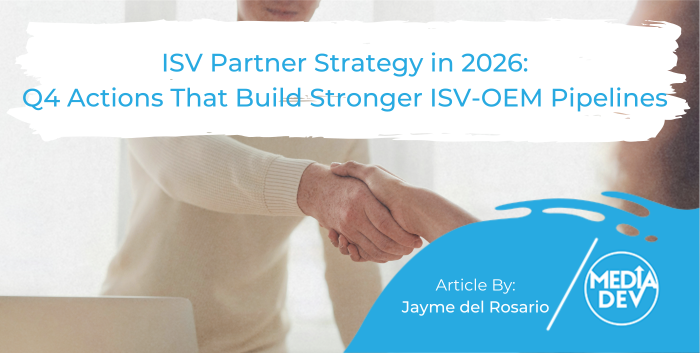Recently, I’ve seen a lot of online conversations claiming that “Social Selling is the new Cold Calling”. But is that really true? Why has social selling become so popular, and how effective is it for B2B software sales? These are both important questions, but first, let’s start with the basics:
What is social selling?
Social selling is a strategy used to generate sales by engaging with prospects on social media platforms such as LinkedIn, Twitter, and Facebook. It’s the process of developing online relationships and nurturing prospects on social media channels in order to push them down the sales funnel. Social selling tactics may include sharing relevant content, one-on-one interaction with potential customers, and what’s now being called “social listening” (which can be described as listening to online chatter by prospects on social media channels). Social selling should not be confused with social marketing which is more about broadcasting “one-to-many” messages instead of cultivating one-on-one relationships.
What’s funny to me about social selling is that the concept is not new. The idea of building relationships in order to sell products is as old as sales itself. And telemarketing has been a form of social selling that’s as old as the telephone. Of course, the rise in social media use has given sales yet another platform to use; one that gives them access to a much wider audience than was ever previously available. Regardless, it’s all the rage in the marketing space these days, so let’s dig in.
What the experts have to say
Liam Halpin, Senior Director of LinkedIn Sales Solutions EMEA, says that the rise of social selling was not created by sales gurus who just discovered a new ingenious way to convince buyers to buy, but rather the social selling revolution comes from the buyers themselves. Buyers today spend more time than ever before researching and comparing products, reaching out to personal and professional networks for advice, querying platforms, and posting questions to online communities (through groups, forums, and the like). We have more data available to us at faster speeds than we could ever access it before. And because of this, buyers are savvier. Sometimes even more so than the sellers themselves! So much so that LinkedIn estimates potential buyers have often completed 60% of the sales process before they even speak to a salesperson.
In addition, LinkedIn also states that:
- 78% of social sellers outsell their peers who don’t use social media for selling
- Sales professionals who use LinkedIn for social selling are 51% more likely to exceed their sales quota than sales professionals who don’t use LinkedIn for social selling
- Sales professionals that use LinkedIn for social selling create 45% more sales opportunities
Which completely explains why salespeople love social selling! It’s obvious that they’re more likely to close deals when they’re interacting with prospects that have already made their way along the buyer journey to such an extent. In software sales, this is even more the case since technology sales cycles are likely to be longer than that of most other products. In addition, the online social footprint that prospects leave gives sellers access to a great deal of insight into the people they’re targeting. It enables them to know more faster which ensures they contact prospects at the right time with the right messaging — two elements that are absolutely key when selling.
For independent software vendors, the battle for sales is on now more than ever. Niche market players, the explosion of start-ups along with mammoth Tier 1 and Tier 2 beasts that pour monster-size amounts of money into marketing, are all after the same accounts, vying for visibility both on and offline. While innovation and creativity counts for a lot when dealing with software sales, it isn’t a magic recipe. There are more start-ups that fail each year than those that make it, and it isn’t always because their solutions aren’t cool.
So how can you develop your social selling skills and develop a strategy that works?
Work on your profile
People will easily connect with other people that they share contacts with. When you start to build your network, having shared contacts in common will help you grow your connections tenfold. So the first thing to do is to connect to everyone you know, and then look at the contacts that those people have who could interest you. Soon you’ll find that it’s a small world after all — many contacts of contacts will start to look at your profile too and even send you requests to connect.
Of course, you need to have an attractive profile to start with. As is true of internet dating sites, don’t use cheesy photos of yourself wearing sunglasses or standing next to a nice sports car. They’re a big turn-off! Professional profiles should have professional photos. Profiles with photos are viewed much more than ones without so it’s a must to have one. Just make sure it’s of high quality.
Your description is just as important as your photo. Having no job experience listed is not going to help you win over prospects — take the time to describe your current and past business projects and some highlights you think are of the utmost importance to communicate. I’ve seen a lot of personal profiles these days that put forth company or product information. This can work to attract prospects to look at your profile if it’s done right. Show your profile to some of your current contacts (clients and coworkers for example) to get their input and tweak your profile until it’s just right.
Keep your profile current
When people change jobs, they often take clients with them. Make sure to update your profile quickly when this occurs so that you can advertise the switch to your network. Updating your profile regularly with new information, or changing your cover photo from time to time, also helps keep you in your contact’s news feed. Keep in mind that not everyone does this — our research (both through social selling and telemarketing) has shown that nearly 50% of profiles on LinkedIn are not updated with current information on a contact’s place of employment. Don’t be one of these people!
Build a relationship pipeline
Many social selling experts say that one of the biggest advantages of social media is that it has turned the cold call into “the warm call”. The ability to transform a cold call into a warm introduction/lead perfectly encapsulates the value of social for sales teams. Social selling doesn’t mean you only need to use one channel (social media) to reach out to prospects — it’s important to be present where your prospects are both on and offline.
Community management is another highly important aspect of social selling (and social listening). Being present on online groups, forums, and industry-specific platforms and monitoring what your audience is saying (not to mention what your competitors are doing) will bring deep insight into the topics that are important to them, and show you how your brand is perceived. This will help you develop effective counterarguments, refine your value proposition and key selling points, as well as immediately address concerns. Of course, this takes a lot of diplomacy and skill since in many respects it’s a lot like good old-fashioned public relations. It’s important never to react to negative criticism with negative remarks — otherwise, you’ll find yourself in crisis management mode!
Reaching prospects where they are will help you be able to engage with them in more meaningful ways; it takes time to build relationships so don’t be in a hurry to sell.
Use social media to distribute content
Social media is a great way to distribute meaningful content. That doesn’t mean all your posts need to be original, but it does mean that you are able to respond to your audience’s concerns with valuable information. Personalized messages to individual people with links to useful content is a great way to foster the relationship as well, as it goes hand in hand with the point above about building your pipeline.
As Jonah Berger writes in his book Contagious: Why Things Catch On, people engage with content that touches them in some way: it has practical value, it’s a form of social currency, it triggers high emotion, it’s a good story… His book explains how, “Harnessing the power of word of mouth, online or offline, requires understanding why people talk and why some things get talked about and shared more than others.” This goes to the heart of why some content becomes viral and other content doesn’t, but it’s just as important to think about this when social selling. Your content needs to fill a need in order for it to be engaging for your prospects. If it does, not only will your prospects find value in it, but they may also share it with other people they know.
Use a variety of channels in addition to social media
Putting all of your eggs into one basket is never a good idea, so diversifying your efforts across channels will ensure greater results. As in our personal lives, we connect with people in many different ways — we call our mom on Sunday, we email her an article we came across during the week that we think will be of interest, we use word of mouth by asking her to tell our brother we’re sorry we haven’t had the chance to catch up for a while, we post a photo on her Facebook page that we shot of her with her granddaughter… Social selling is basically the same thing. Again, if we think of the “social” part as being a way of fostering a relationship (and not just by linking “social” to social media) you’ll get the idea. By getting to know your prospects as people, you’ll be more successful at convincing them to buy.
Conclusion
Social selling is absolutely here to stay and for software vendors, it’s one of the best ways to engage with prospects. But let’s not forget that social selling is not just about social media — it’s about building relationships over time (both on and offline). The best way to do that is to understand your buyer personas and what’s important to them. Only then can your social messages turn into sales.








